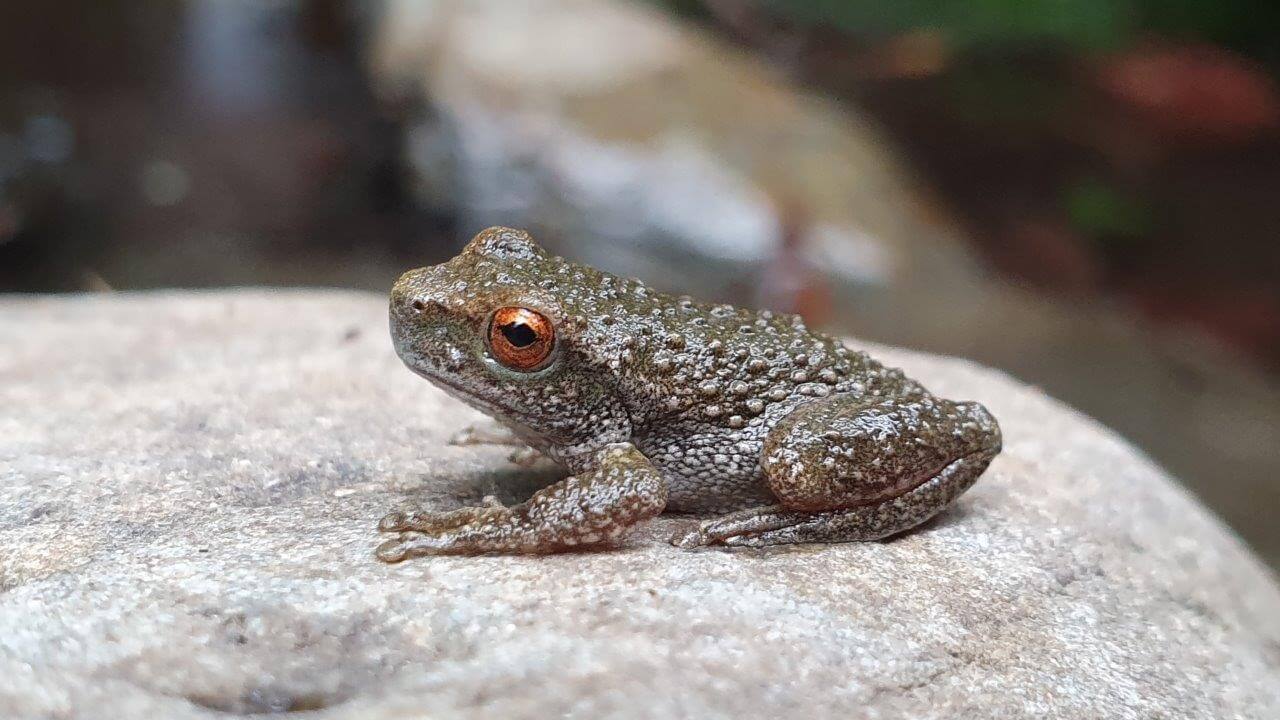
Image credit: DELWP
This work is part of Victoria’s $54.5 million Bushfire Biodiversity Response and Recovery Program.
Spotted Tree Frogs were at high risk of extinction following the 2019/20 bushfires, which burned 50 per cent of their habitat in Victoria, with multiple fire events within their range since 2003.
Spotted Tree Frog
Litoria spenceri
- Critically endangered
- Lives in isolated mountain streams in north-eastern Vic and southern NSW
- 50 per cent of Victorian habitat burned in 2019/20 fires.
- Threatened by habitat loss and degradation including weed invasion, disease caused by Chytrid fungus, predation from non-native fish and the impacts of climate change that result in frequent drought and bushfires.
- Frogs deaths and stream-side habitat loss are the immediate impacts of severe fire events. Longer-term impacts include post rain flood and associated ash and sediment events. These inhibit breeding because eggs and tadpoles are highly susceptible to poor water quality.
What we did
In March and December 2020 and March 2021, specialist researchers from the University of Melbourne through the NESP Threatened Species Recovery Hub and the Department of Environment Land Water and Planning (DELWP) conducted post-bushfire surveys focusing on known Spotted Tree Frog populations.
We compared post-fire Spotted Tree Frog numbers, Chytrid fungus and disease presence to pre-fire benchmarks.
What we found
- Spotted Tree Frogs were still present at four sites but populations were greatly reduced from previously healthy levels.
- Breeding events were recorded at two of these sites, but with low success.
- No Spotted Tree Frogs were found at three sites.
- Chytrid disease was present at all sites.
- Six of the seven populations were at risk of local extinction.
What we’re doing now
- Twenty-six Spotted Tree Frogs were collected by the University of Melbourne in March 2021 for captive breeding by Zoos Victoria.
- Frogs were selected from multiple sites for genetic diversity.
- The long-term aim is to breed sufficient numbers to reintroduce these frogs to their natural habitat and improve their resilience.
- We’re conducting research to increase Spotted Tree Frogs’ resistance to chytrid infection.
- Protecting key populations from introduced non-native fish predation using barrier nets.
How you can help
- Download the Australia Museum’s Frog ID app and record any frog calls you hear.
- Do not handle wild frogs because this can spread Chytrid fungus.
- Support Spotted Tree Frog conservation and the captive breeding program by donating to Zoos Victoria.
See a video of this project in action
https://www.facebook.com/watch/?v=3305724266190280
Project partners
Zoos Victoria, Parks Victoria, The University of Melbourne.
This program is supported by the NESP Threatened Species Recovery Hub and funding from the Australian Government's Bushfire Recovery package for wildlife and their habitat.
Page last updated: 14/09/21